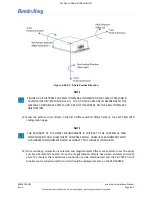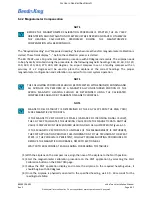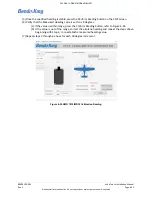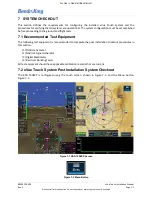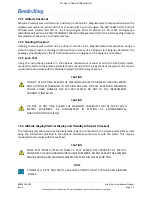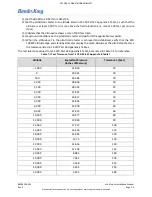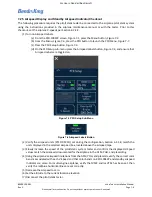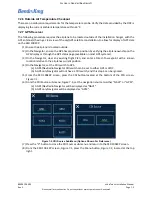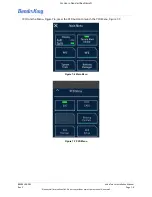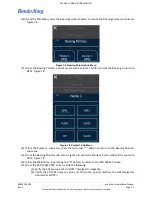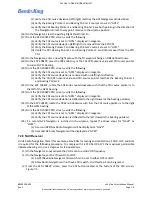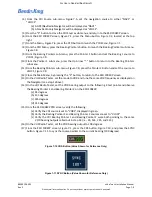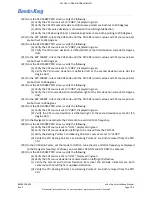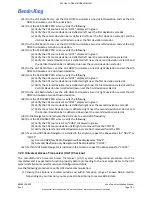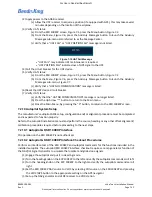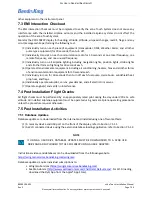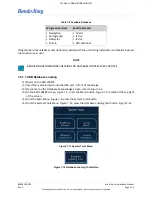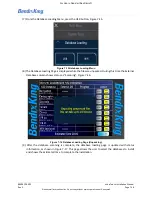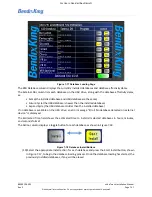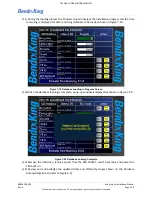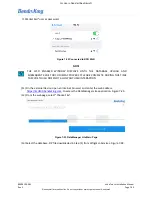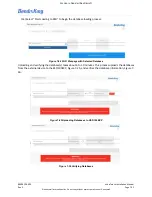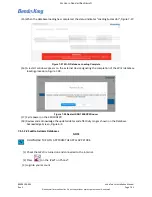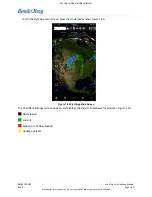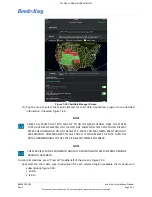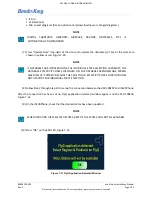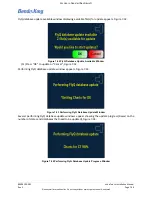
89000109-002
xVue Touch Installation Manual
Rev 2
Page 7-11
© Honeywell International Inc. Do not copy without express permission of Honeywell.
For Use in Non-Certified Aircraft
(31) On the VHF Radio Tester, set the LOC DDM to simulate a one dot left deviation and set the G/S
DDM to simulate a one dot up deviation.
(32) From the KSD 100EXP PFD screen, verify the following:
(a) Verify the CDI source is set to “LOC1”, displayed in green.
(b) Verify the CDI course deviation is deflected left near the first deviation scale dot.
(c) Verify the Lateral Deviation bar is deflected left near the first deviation scale dot and the
Vertical Deviation bar is deflected up near the first deviation scale dot.
(33) On the VHF Radio Tester, set the LOC DDM to simulate a two dot left deviation and set the G/S
DDM to simulate a two dot up deviation.
(34) From the KSD 100EXP PFD screen, verify the following:
(a) Verify the CDI source is set to “LOC1”, displayed in green.
(b) Verify the CDI course deviation is deflected left near the second deviation scale dot.
(c) Verify the Lateral Deviation bar is deflected left near the second deviation scale dot and
the Vertical Deviation bar is deflected up near the second deviation scale dot.
(35) On the VHF Radio Tester, set the LOC DDM to simulate a one dot right deviation and set the G/S
DDM to simulate a one dot down deviation.
(36) From the KSD 100EXP PFD screen, verify the following:
(a) Verify the CDI source is set to “LOC1”, displayed in green.
(b) Verify the CDI course deviation is deflected right near the first deviation scale dot.
(c) Verify the Lateral Deviation bar is deflected right near the first deviation scale dot and the
Vertical Deviation bar is deflected down near the first deviation scale dot.
(37) On the VHF Radio Tester, set the LOC DDM to simulate a two dot right deviation and set the G/S
DDM to simulate a two dot down deviation.
(38) From the KSD 100EXP PFD screen, verify the following:
(a) Verify the CDI source is set to “LOC1”, displayed in green.
(b) Verify the CDI course deviation is deflected right near the second deviation scale dot.
(c) Verify the Lateral Deviation bar is deflected right near the second deviation scale dot and
the Vertical Deviation bar is deflected down near the second deviation scale dot.
(39) On the Navigator, tune/activate the VHF radio to a valid VOR frequency.
(40) From the KSD 100EXP PFD screen, verify the following:
(a) Verify the CDI source is set to “VOR1”, displayed in green.
(b) Verify the CDI course deviation (left/right) is removed from the PFD CDI.
(c) Verify the Lateral and Vertical Deviation bars are both removed from the PFD.
(41) If a second VHF Radio Navigator is installed in the airplane, repeat the above steps for “NAV2” or
“VLOC2”.
(a) A second GPS/Nav Radio Navigator will be displayed as “NAV2”.
(b) A second Nav Radio only Navigator will be displayed as “VLOC2”.
(42) If a third VHF Radio Navigator is installed in the airplane, repeat the above steps for “VLOC3”.
7.2.9 Universal Access Transceiver (UAT) Checkout
The manufacturer’s Universal Access Transceiver (UAT) system configuration procedure must be
completed and is expected to function properly before proceeding to the next steps. Refer to the UAT
system installation manual for setup and configuration details.
Use the following procedure to verify UAT device communication:
(1) Ensure the airplane is located outside and within reception range of known ADS-B station.
Depending on your location, you may need to be airborne to receive ADS-B data.

